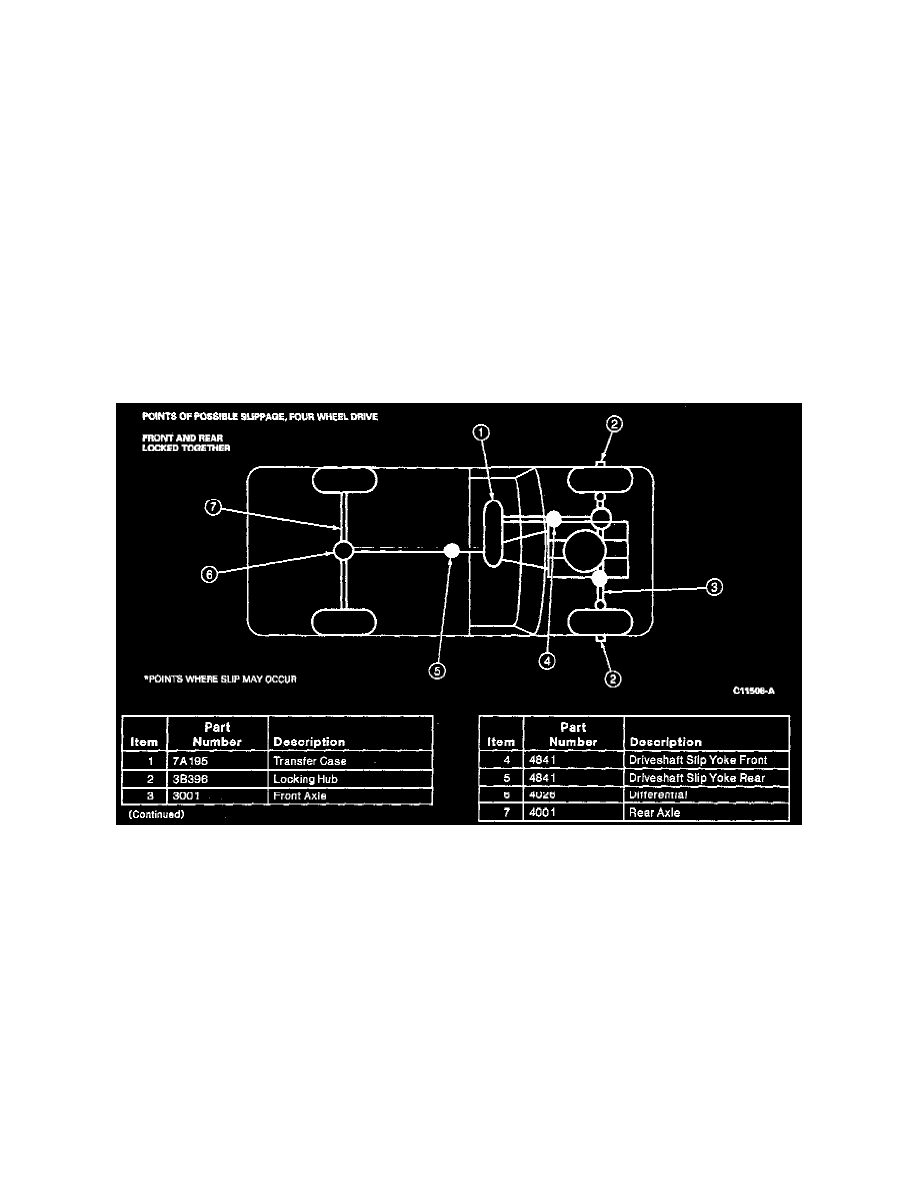Ranger 4WD V6-3.0L VIN U (1997)

Wheel Hub (Locking): Description and Operation
Locking Hubs
DESCRIPTION
There are two types of front hubs available for 4x4 vehicles.
^
Manual (or free-running) that require the driver to get out of the cab to either lock or unlock them.
^
Automatic locking which lock automatically when the axle shaft begins to turn.
Manual (free-running) hubs feature seals that prevent entry of dirt and moisture and are very simple to operate. Automatic locking hubs use the front
axle shaft rotation to actuate a cam that locks and unlocks the hub. Locking hubs may be locked at any time, and can be left in the locked position all
the time, if desired.
On vehicles equipped with a manual shift transfer case and manual locking hubs, low range can be selected when the vehicle's front hubs are unlocked.
This is useful for short distances if very low, creeper gearing (but not 4WD) is needed.
In 4WD, the front hubs are locked (either automatically or manually). As a result, the front wheels are no longer free to turn independently. The front
and rear driveshafts are also now locked together and must turn as one. What's going to happen when the vehicle turns? That's a very important
question.
In 4WD, just as in 2WD, each front wheel travels further than the rear wheel on its side. But this time, the front wheels aren't free to turn
independently of the rear wheels. They are linked to the drivetrain by the transfer case and front driveshaft.
POINTS OF POSSIBLE SLIPPAGE
Even though the difference between the inner and outer front wheels is compensated for by a front differential, torsional windup is still going to occur.
Anytime one driveline component travels further than another, there will be driveline or torsional windup that must be released.
4WD in a 4x4 provides increased drive traction and performance in off-road situations and when driving on snow or ice. It is not designed for
operation on dry surfaces and when traction is good. It is not suitable on dry paved roads or dry parking lots. Where 4WD should and shouldn't be
used gives us the answer as to what releases the driveling or torsional windup.
When a 4x4 is driven off-road in 4WD, the wheels are in contact with dirt, sand and sometimes mud. The vehicle is also likely to bounce over bumps
and ruts. In turns under these conditions, driveline or torsional windup will occur. If it does, the loose dirt, sand, or the slippery mud will allow wheels
to slip a little, limiting the windup. Tension is also relieved when the wheel bounces in the air going over a bump. Snow and ice will also allow the
wheels to slip and limit the windup.
When operating in 4WD on dry hard pavement, even more torsional windup occurs, which is not easily released. When the windup becomes great
enough, the driver will feel the vehicle hop, skip or bounce. This is caused by the front or rear wheels slipping as the windup is released. Whichever
wheels have the least traction are the ones that will slip. The tighter the turn, or the greater the traction, the greater the hop, skip or bounce. This
torsional driveline windup is the cause of many owner complaints concerning the performance of their 4x4 vehicles.
